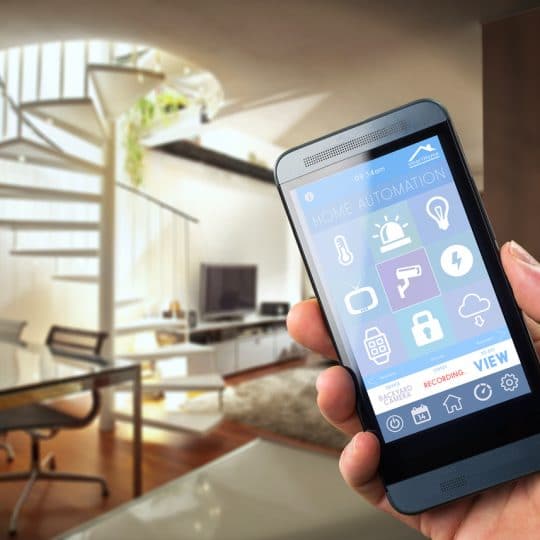Home Automation Systems
What you Need to Know Before You Buy

Home automation is currently one of the most popular trends in technology and home improvement. Enjoy the benefits of convenience, heightened home security, energy savings, and increases to your home’s value by installing a home automation system. By turning your home into a “smart house” you can control all your household appliances and technologies with one system. But how do you choose one that’s right for you and your family? Read on for five things to consider when choosing a home automation system.
1.Choose Based on Your Lifestyle
Walk through your house taking notes as you carry on with an average day and choose the things you’d like to automate. Lighting, home entertainment systems, outdoor sprinklers, garage doors, and your home security system are great places to start. Select the devices and systems that will make your life easier once automated.
2. Control Options
Now’s the fun part: choose how you’d like to control or “trigger” your home automation system. Here are a few options for triggers:
- Manual finger control
- Timer
- Phone commands
- Sound alerts
- Weather sensor
- Motion detection
- Voice control
3. Select the Main Control
You know how and what you’d like to control in your home. Now, select a configuration that works for you. The three main types of home automation control centers are hardware-based, software-based, or a hybrid version of the two.
4. Find a Technology that Works for You and Your Home
This is an extremely important aspect to consider when purchasing a home automation system. There are three main types of control technologies from which to choose. Take great care in this factor as it can be a costly misstep if you change your mind.
- Wireless: least expensive option, but still a newer technology, so compatible devices are harder to find.
- Hard Wiring: reliable and fast, but installation is expensive.
- Powerline: easy to install and less expensive than hard wiring, but have proven to be less reliable.
- Ethernet: reliable but expensive to install and difficult to find compatible devices.
- Infrared: high performing, but limited range.
- Serial: reliable, but installation is expensive.
5. Keep Costs in Mind
Say you’ve got your eye on a great deal for a home automation system. Take into account that monthly service charges can add up. Take care to consider these fees and calculate your future costs before signing a contract. Purchasing a kit or bundled package allows you to save money initially by cutting down on the costs of buying initial pieces.
Call Security Five for Assistance in Selecting a Home Automation System
Purchasing a home automation system is an important investment. Call on the team at Security Five for assistance in choosing a home automation system that will fit your family’s needs for years to come.